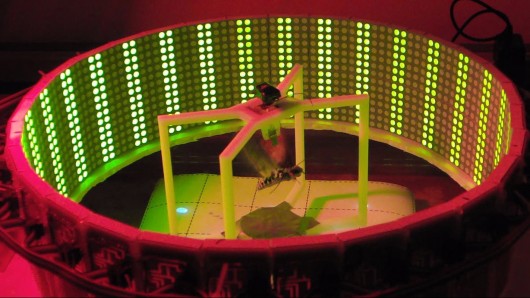
We've been hearing a lot about the development of tiny flying sensor-equipped robots, that could be sent into areas such as disaster sites to seek out survivors or survey the damage. However, why go to the trouble of designing those robots from scratch, when there are already ready-made insects that are about the right size? That's the thinking behind research being conducted at North Carolina State University, which is aimed at converting moths into "biobots."
Led by Dr. Alper Bozkurt, the NCSU team has been working with moths suspended in a rig that holds them in place while they fly, but still allows them to turn to either side. As the moths make those turns, implanted electrodes monitor the electrical signals sent by their brains to their flight muscles – those electrodes are first implanted when the moth is in its pupal stage, so they've grown right into its body by the time it emerges from the cocoon as an adult.
Using this setup, the researchers have been able to determine which signals are responsible for which flight maneuvers. They're now working on a way of transmitting those signals to the moths as they're in flight, so that they could be "steered" by a remotely-located human operator.
According to Bozkurt, this work will include "developing an automated system to explore and fine-tune parameters for controlling moth flight, further miniaturizing the technology, and testing the technology in free-flying moths." If all else fails, he has already had considerable success with cockroach-based biobots.

 Previous page
Previous page Back to top
Back to top







